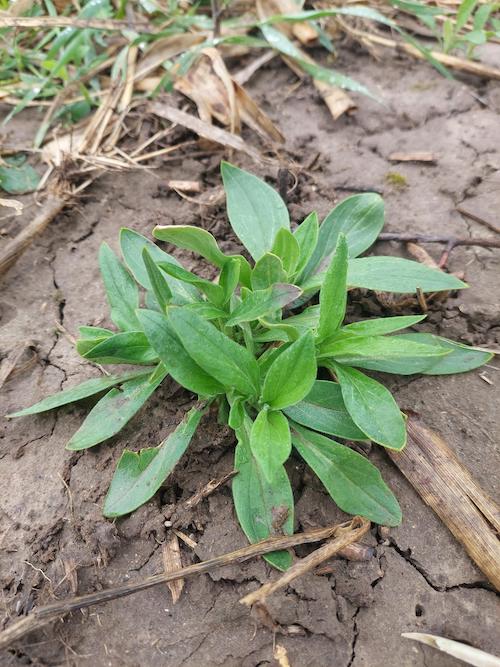Field Update 5-8-23
May 08, 2023

Notes from the Field
- Last week featured plenty of wet and cool conditions. Rainfall for the week averaged one to two inches while snowfall ranged from one to four inches in the southern Lake Winnebago area. The measurable snowfall Monday morning was the 22nd accumulating snowfall for the month of May since records were kept beginning in 1887! High temperatures early in the week were in the mid 40’s. Temperatures by Friday peaked out at 74 degrees. Soil temperatures were at 37 degrees from Monday through Wednesday. Soil temperature by Saturday morning had clawed its way back to 49 degrees.
- The wet, cold soil conditions were not conducive for getting fieldwork done last week. The abundant moisture created some waterfowl habitat in area fields. As a matter of fact, a few pelicans were noted in low fields east and north of Malone. Soil conditions dried out just enough for growers to perform tillage and corn planting activities on the hills south of Malone. Herbicide applications also resumed late in the week as soil conditions improved. The focus of the herbicide applications was on terminating rye cover crop and alfalfa fields that will be rotated to corn. Wheat herbicide applications will begin soon as soil continues to dry out.
- Pheromone traps north of Malone captured a few black cutworm and true armyworm moths. Moth numbers have dropped off from numbers recorded a few weeks ago.
- Alfalfa fields continue to look good to excellent. Alfalfa height is 8 to 10 inches tall. Fungicide applications need to be completed soon as taller alfalfa may make it more difficult for fungicide to protect bottom leaves. A few fields stand out as having thinned stands as they have an abundance of dandelion growing in them. The yellow flowers found in the alfalfa fields may be a good indication that the stand may be thinned and may need to be rotated to corn. Some yellowing of alfalfa was noted last week especially on thin, rocky soil where sulfur may not be adequate to maintain a healthy alfalfa crop. Soils low in organic matter, hill tops, and gravelly soils tend to be low in sulfur as organic matter is an important source of sulfur. The cool weather that we have been experiencing of late may also be slowing the mineralization of sulfur from the organic matter into plant available sulfur.
- Winter wheat continues to look good to excellent. Herbicide applications for some of the more advanced wheat will begin shortly once ground conditions allow. Powdery mildew has been found on some of the lower leaves of the wheat. Powdery mildew will appear on the upper part of a wheat leaf as small white to gray “cottony” fuzz that can be easily scraped off by a fingernail. Moist, humid weather with widely fluctuating temperatures favors disease development. The fungus that causes powdery mildew overwinters in the soil on wheat residue. Volunteer wheat can serve as a reservoir of the fungus until the next crop of wheat is planted back in to the field. Yield losses from powdery mildew are greatest in situations where the disease is present on the upper leaves of the wheat including the flag leaf. The goal of fungicide applications is to protect the upper leaves of wheat as they are the “solar panels” that help to drive wheat yields. Products like Propi-Star and Topaz can be applied early with herbicide to help keep the fungus in check and keep it from spreading up the plant. Products such as Prosaro and Miravis Ace which are labeled for heading applications also have activity on the fungus that causes powdery mildew.
- The flag leaf is the leaf that comes out before the head emerges on wheat. This important leaf contributes 40 to 45 of total wheat yield. The leaf below the flag leaf is called the penultimate leaf. This leaf contributes 20 to 25 percent of total yield. The head contributes 20 to 25 percent total wheat yield. The leaves below the penultimate leaf contribute about 10% to total wheat yield. It is paramount that the upper two leaves are disease free in order to maximize wheat yield potential. It is all about keeping the “solar panels” healthy so that they can maximize photosynthesis which ultimately goes into making grain. The goal of fungicides is to stop diseases from infecting yield bearing leaves. Fungicides used on wheat are preventative and not curative. They need to be applied before disease moves to yield bearing leaves.